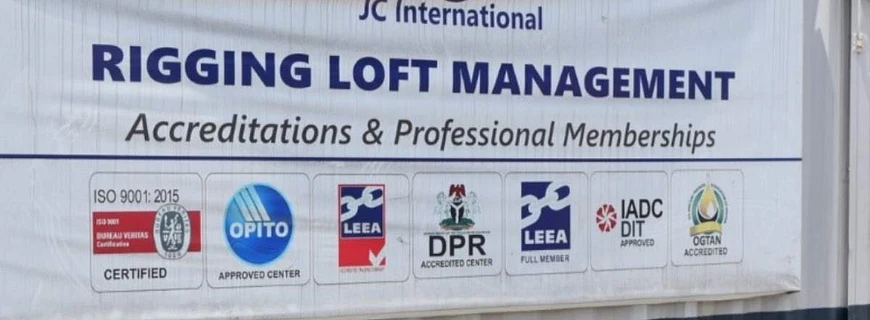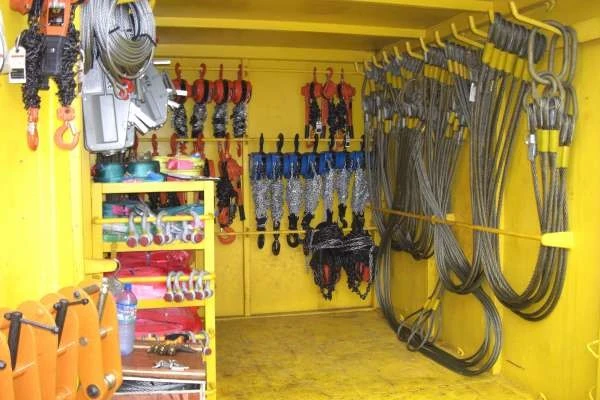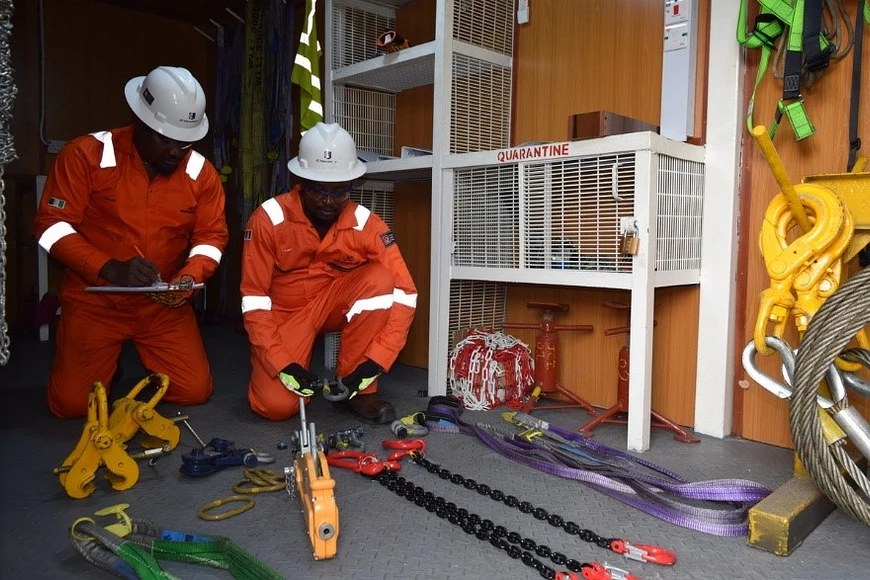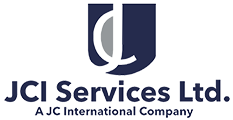
Rigging Loft Controller Training The Key To Safe Management Of Rigging Lofts
The rigging and lifting equipment used to conduct a variety of operations both onshore and offshore must be correctly managed and controlled throughout these operations. Rigging and lifting equipment must also be correctly inspected before and after operations to ensure there is no damage and confirm it is safe to use. The key to safe use of rigging equipment is ‘Control’.
The Control of Lifting & Rigging Equipment is an essential requirement for duty holders to comply with the legislation to ensure:
- Equipment is fit for purpose
- Equipment has undergone the necessary inspections and examinations prior to use
- Equipment is suitability marked and identified.
- Equipment is only issued to persons deemed competent to use the items
- Defective items are removed from service
As a duty holder, therefore, it is important to follow LOLER guidelines when organising control of rigging lofts. As a minimum, the following are necessary:
- Independent Lifting Equipment Contractor appointed and responsible for the periodic inspection and recertification of all rigging & lifting equipment
- Site Specific Lifting Equipment Register maintained by Lifting Equipment Contractor.
- Appointment of fully trained and competent Rigging Loft Controllers.
- Rigging loft with controlled issue and receipt of loose lifting equipment c/w quarantine area for equipment awaiting inspection and quarantine area for defective equipment.
- Colour coding system of company owned and 3rd party equipment.
- Pre-use site acceptance inspection by LOLER Focal Point for 3rd party equipment arriving at the asset.
- Comprehensive procedure detailing control, issue, and return of rigging equipment to central loft.
The control and overall management of a portable rigging equipment should be undertaken by a person who is ‘competent’– suitably experienced and knowledgeable enough to formulate and follow a procedure from issue, use and return of the equipment. It is also essential that any competent person assigned to rigging loft control should undertake appropriate training to ensure they are able to perform their job safely.
The term Rigging Loft Controller refers to Competent Person who takes responsibility for rigging equipment in site locations.

Key Aspects
The processes involved in effective control of rigging loft must be repeatable to ensure the safe system of work is robust and comprehensive. Along with a trained and competent loft controller, a suitable Rigging Loft shall be available at work locations where lifting operation is conducted.
The Rigging Lofts must meet strict conditions necessary for safe storage of rigging equipment. The below are therefore minimum requirement:
- Have adequate security to prevent unauthorised access.
- Sufficient space to allow orderly storage of equipment.
- The layout should contain a suitable location or workbench for the inspection of equipment returned to the loft after use.
- The Rigging Loft must have a quarantine bin for the storage of equipment removed from service and awaiting return onshore.
As stated above, control is critical for the safe use of rigging equipment issued from the rigging loft.
The Rigging Loft Controller’s’ Main Responsibilities:
- Issue equipment
- Accept returned equipment
- Maintain the portable equipment registers
- Inspect equipment on receipt
- Inspect equipment prior to issue
- Inspect equipment on return
Training
The training is designed to make candidates aware of the correct methods of managing and controlling lifting equipment which is used to conduct a variety of operations. Candidates will be trained in the correct inspection of equipment in accordance with legislative, manufacturers and company requirements.
The course is a mix of theoretical and practical activities, during which candidates will be required to demonstrate their level of knowledge and understanding of the training programme content. Anyone involved in rigging and lifting operations and required to supervise and mange rigging lofts will benefit from rigging loft controller training. The training is structured with a requirement for maintenance of competency over a 2-year period.

The main benefits of organised and structured training will:
- Maintain the competence of those responsible for managing rigging lofts
- Meet all associated regulatory requirements, applicable regulations, and standards
- Assure the development of a safe and proper system of work
The stages are listed below.
Four Key Stages In Achieving Competency Through Training
STAGE 1:
The first stage of all training comprises initial training and assessment, which is typically carried out at an onshore training establishment and identified as Stage 1.
STAGE 2
Gain work experience managing rigging lofts which with or without supervision. Experience is recorded in a logbook.
STAGE 3
This stage refers to successful completion of workplace assessment of competency. At this level, having covered the outlines of course in practice, the person can assume the level required to fully manage and supervise issue and returns of rigging equipment from loft.
STAGE 4
This stage refers to the ongoing performance development with re-training/re-fresher/re-assessment of competence as part of company overall competency system.

Other training providers conduct a robust 1- or 2-days intensive training which covers all the elements Rigging Loft Management with particular emphasis on:
- Definitions & Terminology. An explanation of all the commonly used definitions and terminology.
- The Law, Standards and Legal Requirements. including the Health & Safety at Work Act, LOLER, PUWER, Supply of Machinery (Safety) Regulations, and recognised codes of practice.
- Inspection and examination of Lifting Equipment
- Principles for the Selection of Lifting Equipment. Marking, storage and handling, pre-use inspection, assessing the operation, and certification.
- Documentation and record keeping.
Certification And Award
LEEA Certification
At JC International, our accreditation with OPITO, LEEA , IADC, ISO 9001 and other relevant professional trade associations, ensures we deliver training, certification and qualifications in accordance with awarding bodies and approved codes of practice.
Our focus as a prominent oil and gas training provider is to provide a world-class training and certification service to ensure that our candidates gain the required competence and realise their full potentials.

